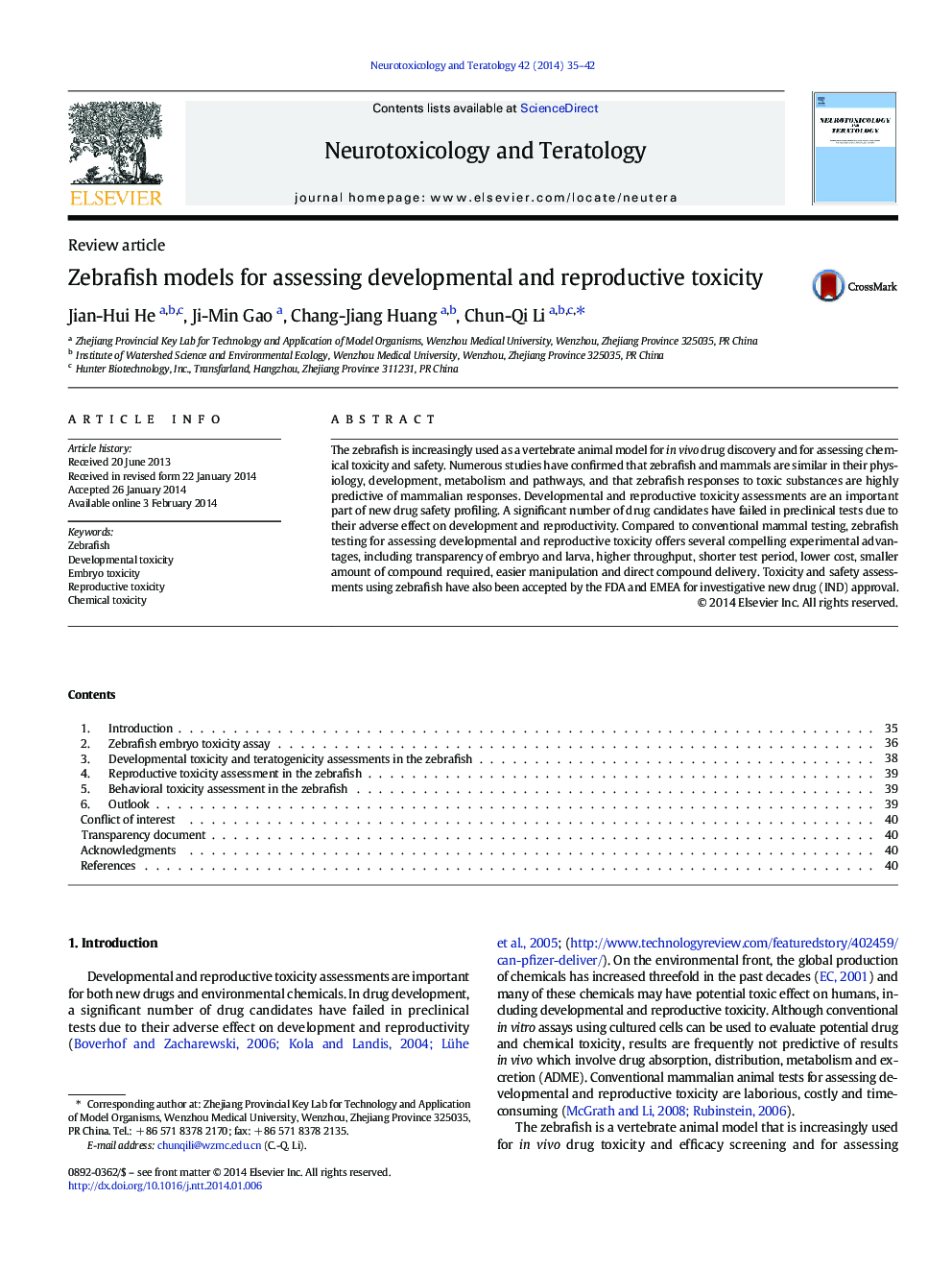| Article ID | Journal | Published Year | Pages | File Type |
|---|---|---|---|---|
| 2591136 | Neurotoxicology and Teratology | 2014 | 8 Pages |
•Zebrafish and mammalian physiology and development are strikingly similar.•Zebrafish is predictive of mammalian toxic responses.•Zebrafish is increasingly used for in vivo drug discovery.•FDA & EMEA have accepted zebrafish toxicity & safety data for IND approval.•A number of new drugs discovered in zebrafish models are now in clinical trials.
The zebrafish is increasingly used as a vertebrate animal model for in vivo drug discovery and for assessing chemical toxicity and safety. Numerous studies have confirmed that zebrafish and mammals are similar in their physiology, development, metabolism and pathways, and that zebrafish responses to toxic substances are highly predictive of mammalian responses. Developmental and reproductive toxicity assessments are an important part of new drug safety profiling. A significant number of drug candidates have failed in preclinical tests due to their adverse effect on development and reproductivity. Compared to conventional mammal testing, zebrafish testing for assessing developmental and reproductive toxicity offers several compelling experimental advantages, including transparency of embryo and larva, higher throughput, shorter test period, lower cost, smaller amount of compound required, easier manipulation and direct compound delivery. Toxicity and safety assessments using zebrafish have also been accepted by the FDA and EMEA for investigative new drug (IND) approval.
Graphical abstractFigure optionsDownload full-size imageDownload as PowerPoint slide
